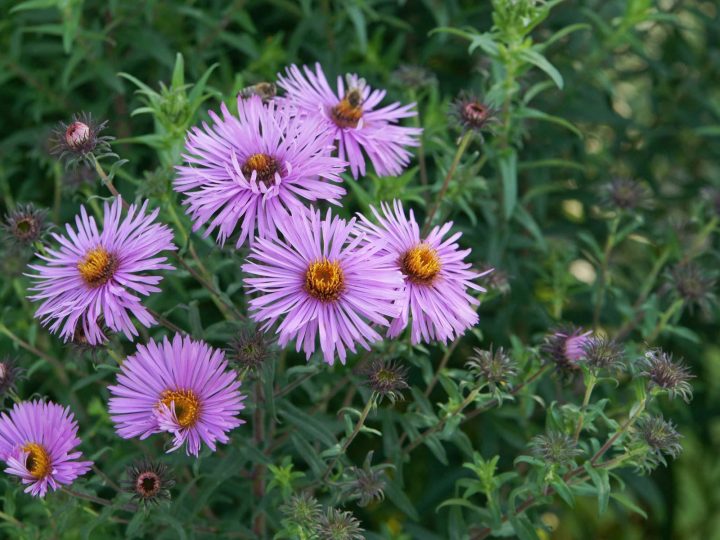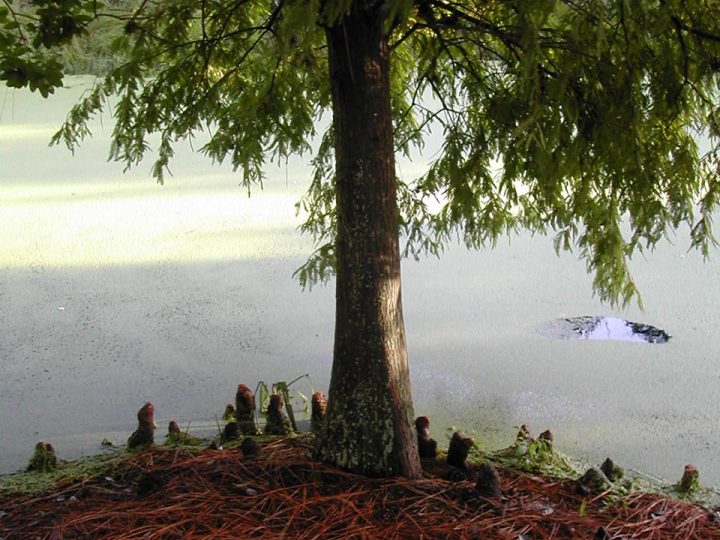
Four Seasons
This theatre of seasonal design features four ornamental trees, each crowned by a seasonal rain garden.
Cost
People
Upkeep
Experience
Stormwater
Sun/Shade
The Four Seasons lot design provides four small interchangeable landscapes (season circles), each reflecting one season: spring, summer, fall and winter. This choose-your-own-adventure style allows you to build one or more season circles on your lot, depending upon your preference.
Each season circle features an ornamental tree or shrub with peak seasonal interest, crowned by a colorful, planted rain garden filled with perennials and shrubs.
This design can accommodate stormwater runoff from adjacent properties and allow water to infiltrate back into the soil within about three days.
Although the Four Seasons lot design is priced and designed to accommodate one of each season on a typical residential lot, we’ve left room for interpretation. For example, if you are smitten with summer, you might choose to install four of the summer season circles on your lot. This design is ideal for a resident who is interested in building out their lot over time.
Ideal Location: Residential lot or corner lot in full sun or part sun.
Lot Type
Special Lot Condition
DFC 20 Year Land Use Area
Cost
The Four Seasons is a higher priced lot design and is estimated based on the use of trees that are 1.5 inches in diameter, potted plants and utilizing volunteer labor. To save money, you can buy smaller trees or plants. Residents can also select only one or two of the Four Seasons’ rain gardens, or phase rain gardens in over a few planting seasons. The cost assumes that residents or volunteers have access to basic safety gear and garden tools.
Habitat Benefits
Other Benefits
Green Infrastructure
Trees provide multiple benefits to every neighborhood, including their ability to soak up water during storm events. With time, the benefits of planting a tree only increase. This lot design includes a mix of species to ensure resilience. One season circle can responsibly manage the runoff from a 1,200-square-foot area; with two you can manage runoff from a house and a garage. Installing all four seasons is a great way to contribute to the health of our Great Lakes waterways and ecosystem.
Vegetation and Visibility
The tree trunk spacing of this lot design creates clear visibility from the street to the alley. It is possible to see most of the way through this lot.
Falling Hazard
The Four Seasons lot design includes trees, however, if you follow the design specifications, all trees are located to ensure that basement root intrusion and potential falling hazards do not occur, and that the City’s plan review requirements are followed. Unmaintained trees create a hazard to neighboring structures. Consider if your tree placement might eventually block any daylight in your house. We recommend working with a certified arborist as your trees mature. Please note the trees on the plan are shown at a mature spread.
Lifespan
Planting Type
Most Interesting Season
Other Consideration
Build
Installing the Four Seasons will make for a fun and rewarding weekend with your friends, family or neighbors. The installation of this lot should not require professional assistance if you, with the help and support of others, would like to build this design. Please refer to the Step-By-Step section for guidance. The installation process does not require any special, mechanized equipment. The most strenuous physical tasks are transporting your trees and plants and digging your rain garden season circles. The Field Guide recommends having access to a car or vehicle for hauling your plants to your lot. Always hire a professional (or barter with one of your more energetic neighbors) if you are not up for the challenge, but remember, this will increase your costs. Your group may also decide to build the Four Seasons over a series of weekends or seasons, completing one rain garden at a time through a phased or incremental approach.
NOTE: The older and larger the trees you plant, the more the Field Guide recommends speaking with a professional or an educational group to ensure a safe transition from their previous home to your lot. In some ways trees are like people – the older they are, the longer it can take to adjust to a big change, like moving across town.
Build Time Estimate
Six hands or more! With the help of friends, family or neighbors, this project could be completed in two weekends. The Field Guide recommends three to five healthy volunteers per season circle. More volunteers can shorten your build time! The Field Guide also assumes the lot is construction ready, and all equipment and materials required for the lot design have been acquired and are ready to use.
Build Difficulty
Number of People Needed
Neighbor Labor
Time Taken to Build
Build Season
Transportation Intensity
Permit Requirements
Upkeep
A rain garden requires care and maintenance to thrive. The Four Seasons are four, manageably sized rain gardens; however, watering and weeding plants is still required, especially during the first two years. Do not let your rain garden dry out in the first warm season.
Add mulch annually to help suppress weed growth.
Plan ahead and remember to think about where and how you will access water for the next month! Trees must be watered regularly during the first year. Water weekly or as needed.
The Field Guide recommends connecting with an arborist or taking a workshop on tree health and maintenance. The Greening of Detroit offers a great Citizen Forester program to interested residents.
Seasonal Upkeep Levels
- Spring: Medium
- Summer: Medium
- Fall: Medium
- Winter: Low



